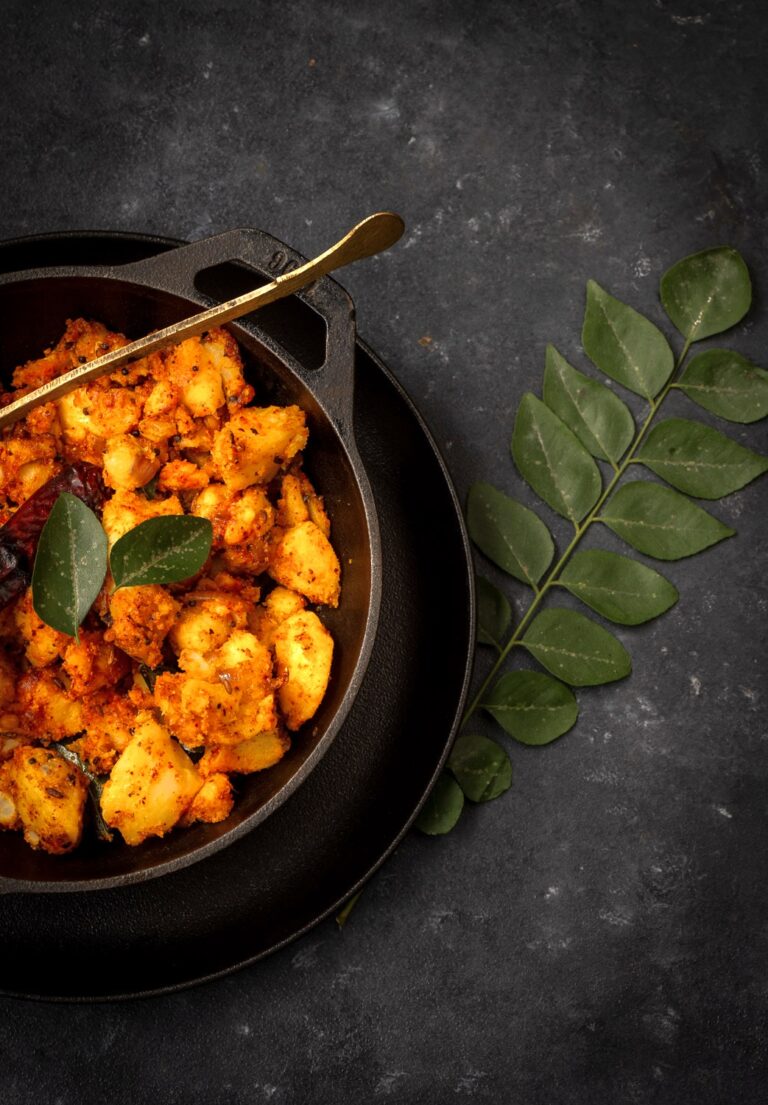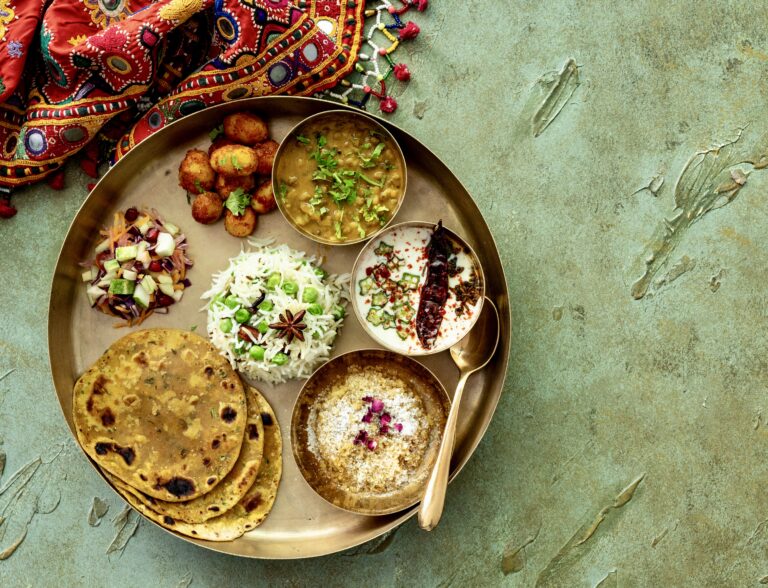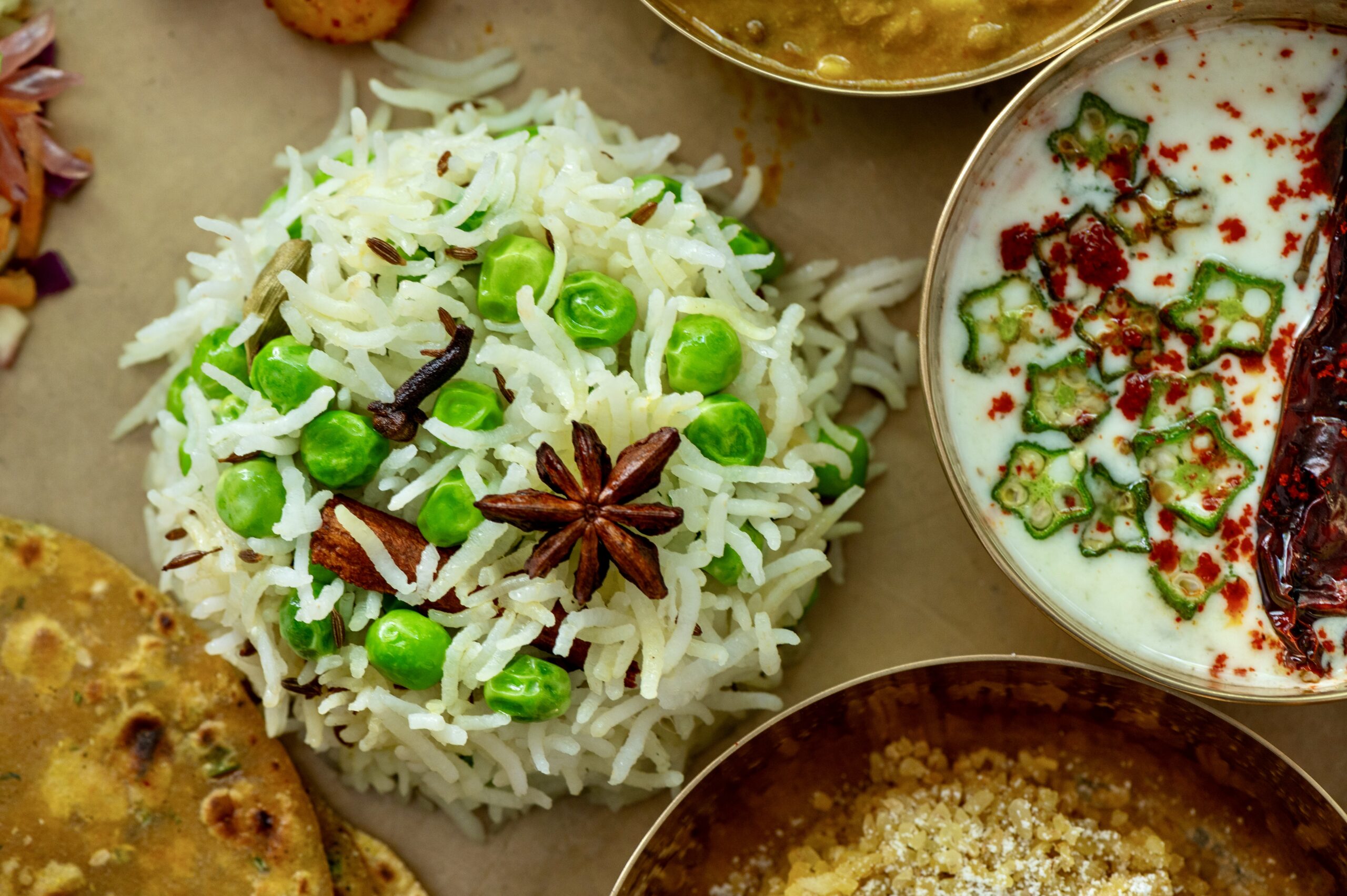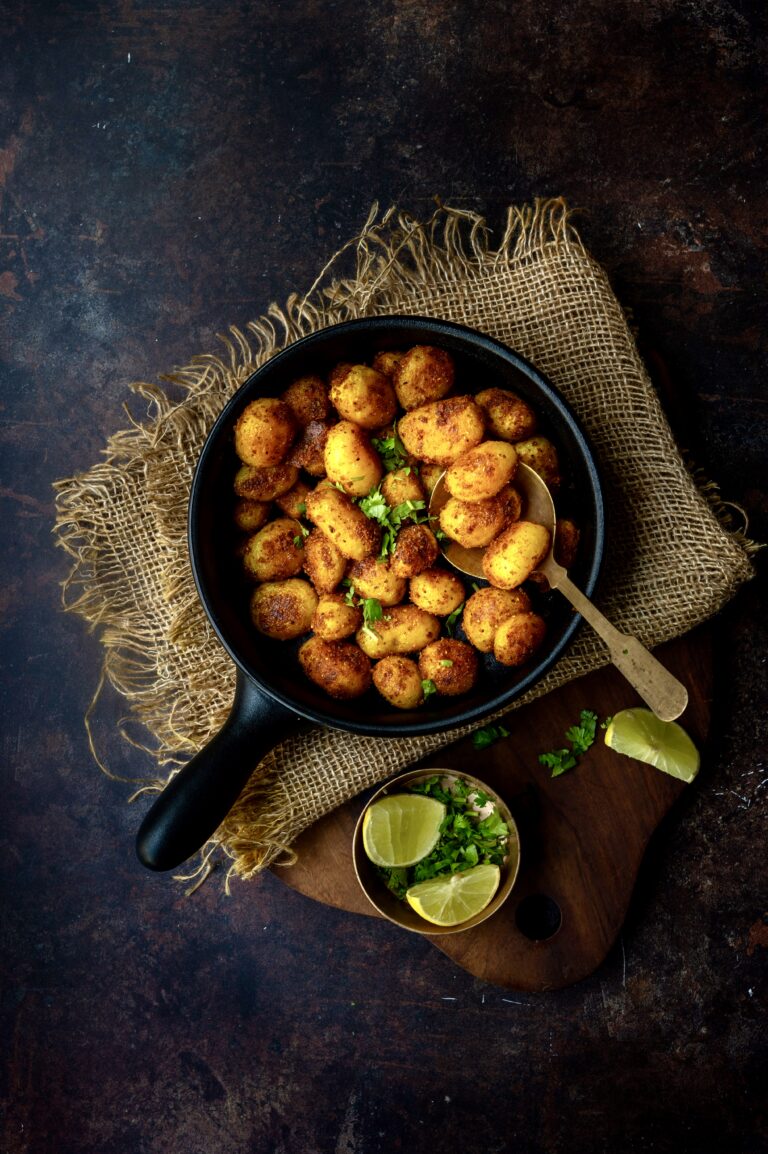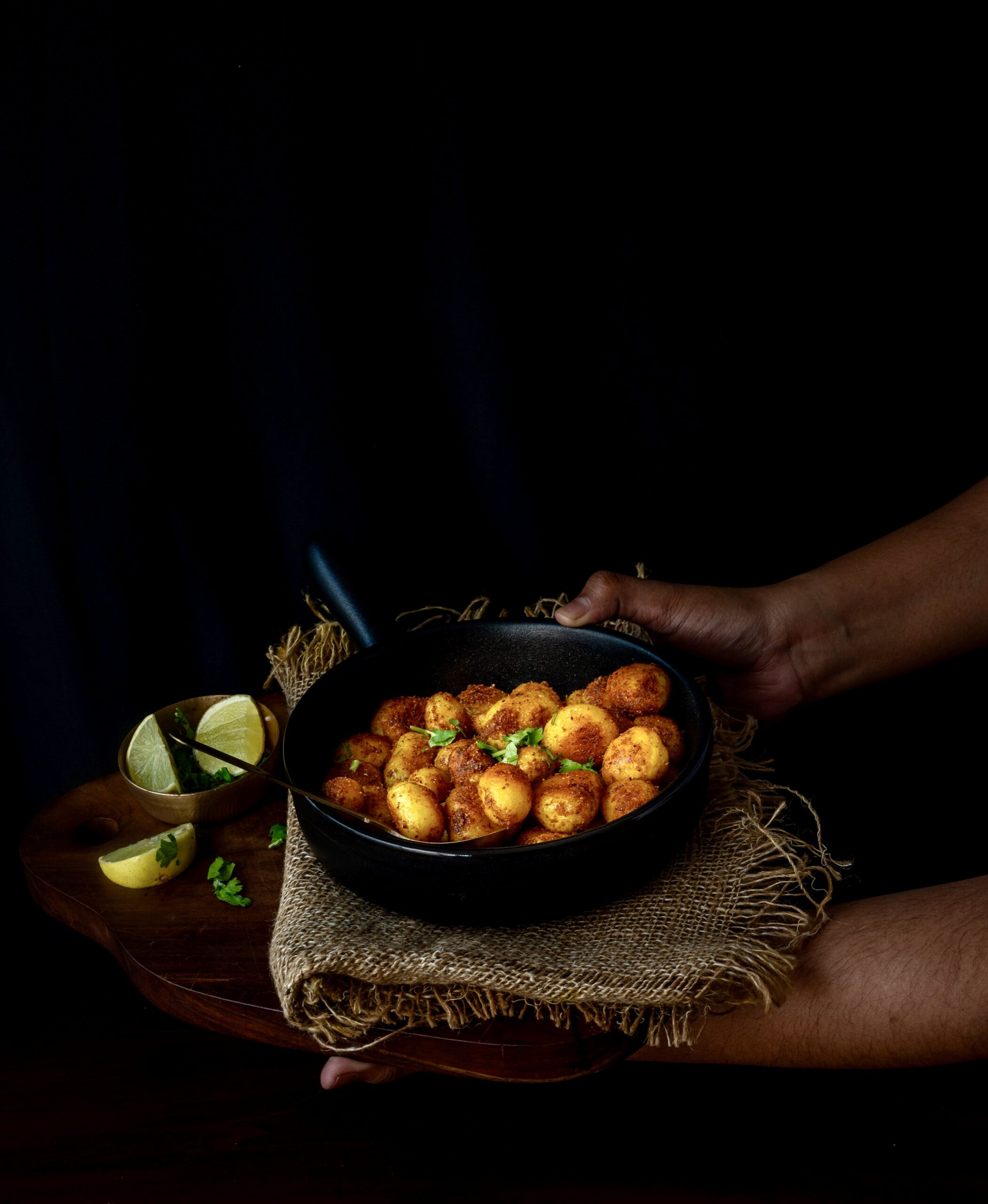When it comes to recipes, sometimes just having one of a certain dish isn’t enough. I have shared my own version of roast potatoes on this blog in the past, but lately I have felt inspired to start making them in the Tamil Nadu style more often. As someone born and brought up in Chennai, this dish is one that I have known and enjoyed all my life, as will anyone who loves a spicy accompaniment.
When I said I was feeling inspired, this was in part because one of my favourite pastimes is surfing the Internet for all things to do with food. I love looking up and reading about the subject, seeing what people out there are making, and watching videos not just on trends but also on classic dishes. They may or may not be authentic, but they are exciting just the same. I choose whichever I am interested in, tweak the recipes a bit based on my preferences, and they often turn out yummy. Through this blog, I am a part of that community too, and contribute to it. It feels special to know that we are all inspirations to one another, and to me this is true whether in the art world or in cooking or in writing or in so many other arenas. Online and offline, my passion for recipes – creating them, discovering them, and sharing them – is joy-bringing, I love being gifted or gifting nice cookbooks too. It has long been a dream of mine to publish one of my own, and this is the year in which that will come to fruition.
Coming back to the South Indian-style roast potatoes, let me just say at the outset that it’s okay to indulge in carbs and a little extra oil sometimes. I try not to do either too often, so when I do I choose my favourites and make sure I relish them. This dish is one I have become such a pro at that I even make the masala at home, powdering and keeping a fair quantity to use as needed. I have shared the recipe for that too, and recommend that you take a little extra time to prepare that too. You’ll taste and smell the difference it makes.
The aroma and flavour truly take me back to my school days, when many of my friends would bring curd rice in their tiffin boxes with roast potatoes on the side. The moment that lunch was unpacked was special: the fragrance of deep-fried, well-seasoned potatoes would rise. It would be irresistible. We loved sharing our lunches, as I’ve shared in earlier posts like this spinach rice recipe.
I will admit: carb-consciousness has made me like potatoes somewhat less now than I used to, or at least eat them less often. But as a child and a teenager, I simply adored them. So much so that when I first started learning how to cook, I told my mom that the first dish I would prepare on my own would feature this ingredient. I had also been inspired by my older brother. When our mom travelled, he would make my sister and I sit in the kitchen and watch as he prepared potato sabzi and roti for us. So at around age 14 or 15, under her supervision, I made a simple sautéed potato dish with barely anything but salt. Salt, heat and oil are all that’s really needed to make a potato taste good, anyhow.
Still, what a long way I have come since that basic fried potato dish! From nothing-but-salt to grinding my own spices, from the easiest way to the elaborate and the innovative. I continue to learn every day, and the journey goes on. I am so glad to have you along on mine, sharing recipes that make life more delicious.
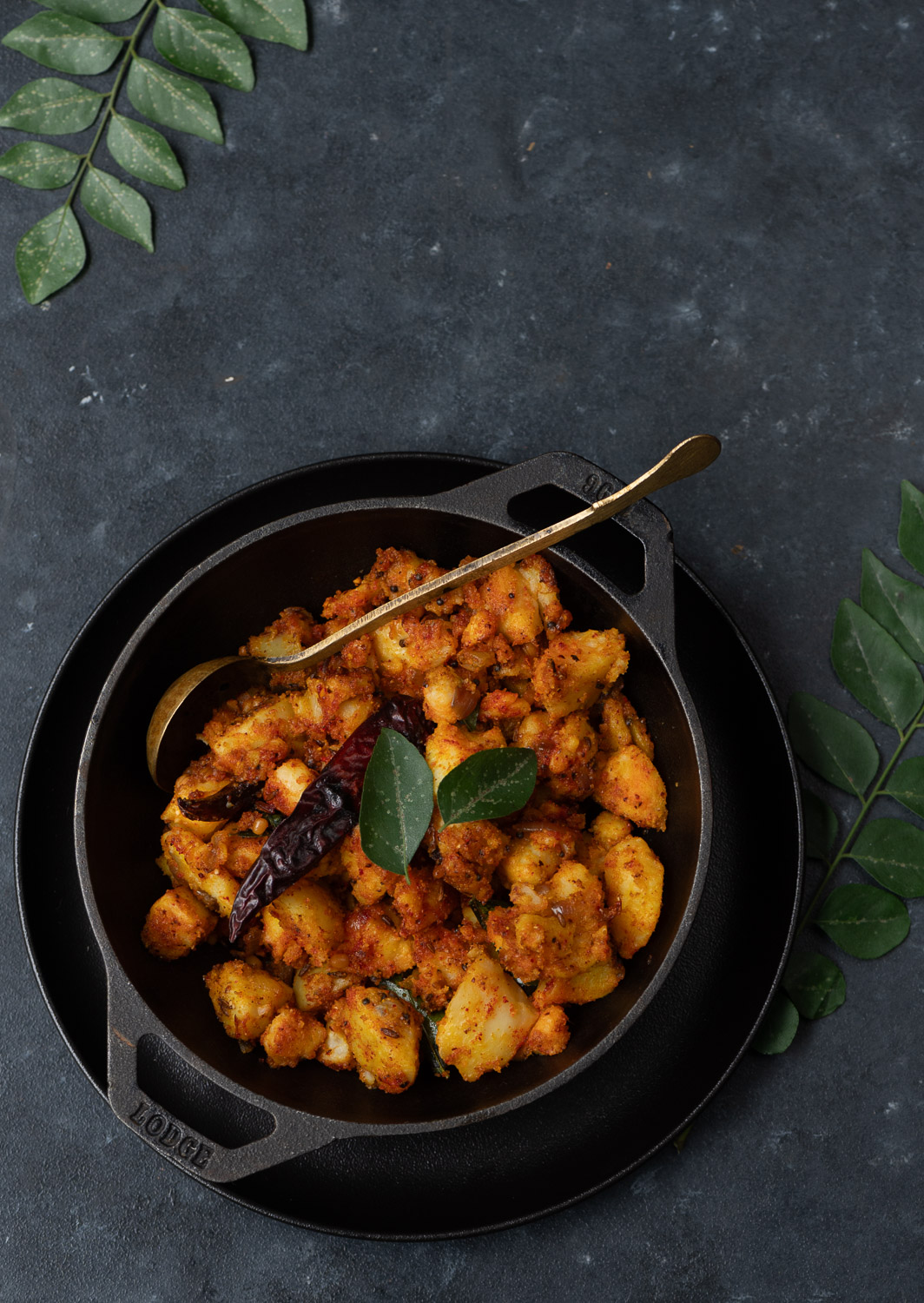
South Indian Roast Potatoes
(Yield: Serves 2)
250 grams potatoes
Salt to taste
½ teaspoon turmeric powder
¼ tsp mustard seeds
½ teaspoon urad dal
¼ tsp cumin seeds
¼ tsp asafoetida
A few curry leaves
2-3 tablespoons oil
3-4 Kashmiri red chillies (whole)
2 tablespoons onions (finely chopped)
Spice powder
1 tsp urad dal
½ teaspoon methi seeds
½ teaspoon cumin seeds
1 teaspoon channa dal
1 teaspoon oil
Boil, peel and dice the potatoes. Set aside.
In a pan, begin to prepare the spice powder by adding the one teaspoon of oil. Once it has heated, add all the spice powder ingredients and roast until golden. Remove onto a plate and allow to cool. Now blend coarsely and keep ready.
In the same pan, add the 2 tablespoons of oil, and once heated add the mustard seeds, cumin seeds and urad dal. Once they turn golden and splutter, add the red chilies, curry leaves and asafoetida.
To this, add the onions first. Sauté and then add the potatoes and the freshly-made spice powder. Sprinkle with salt and turmeric powder. Mix this all together well. Allow to roast until it all comes together well and the potatoes are slightly golden at the bottom.
This dish works as a great accompaniment for dosas, rotis or any kind of rice dish. If you’d like to explore more potato dishes or more South Indian flavours, there’s more in the blog archives where this came from!

